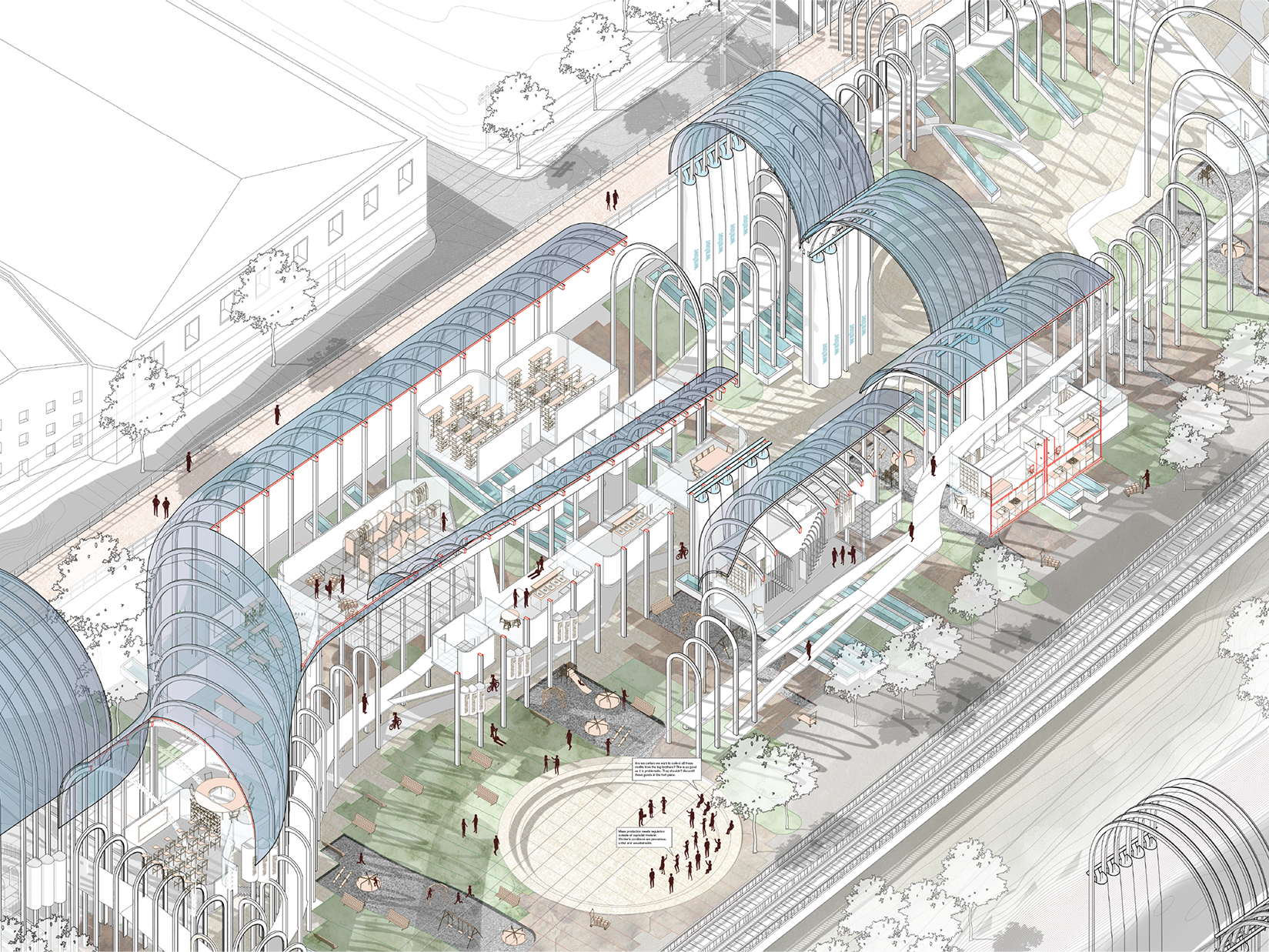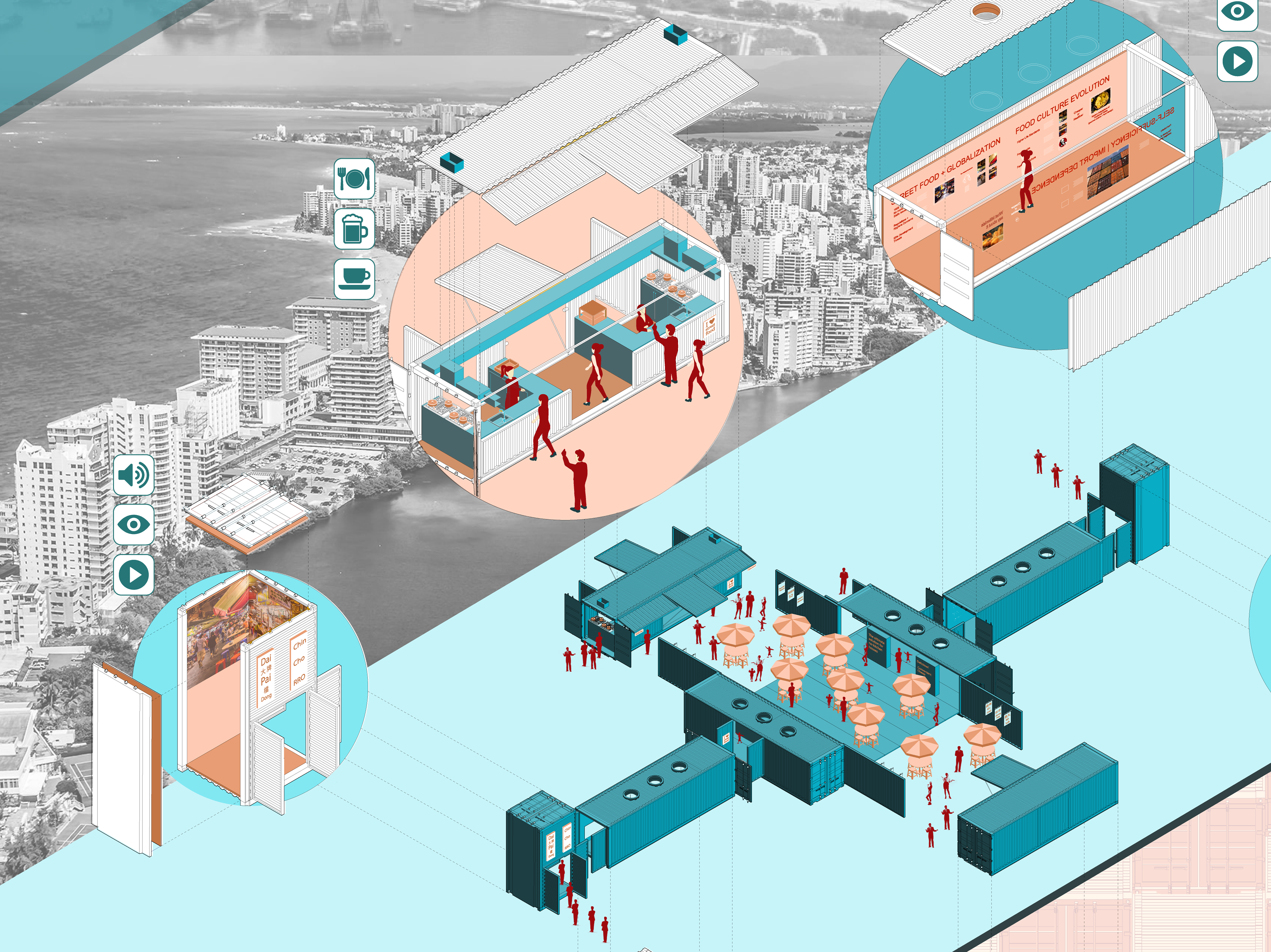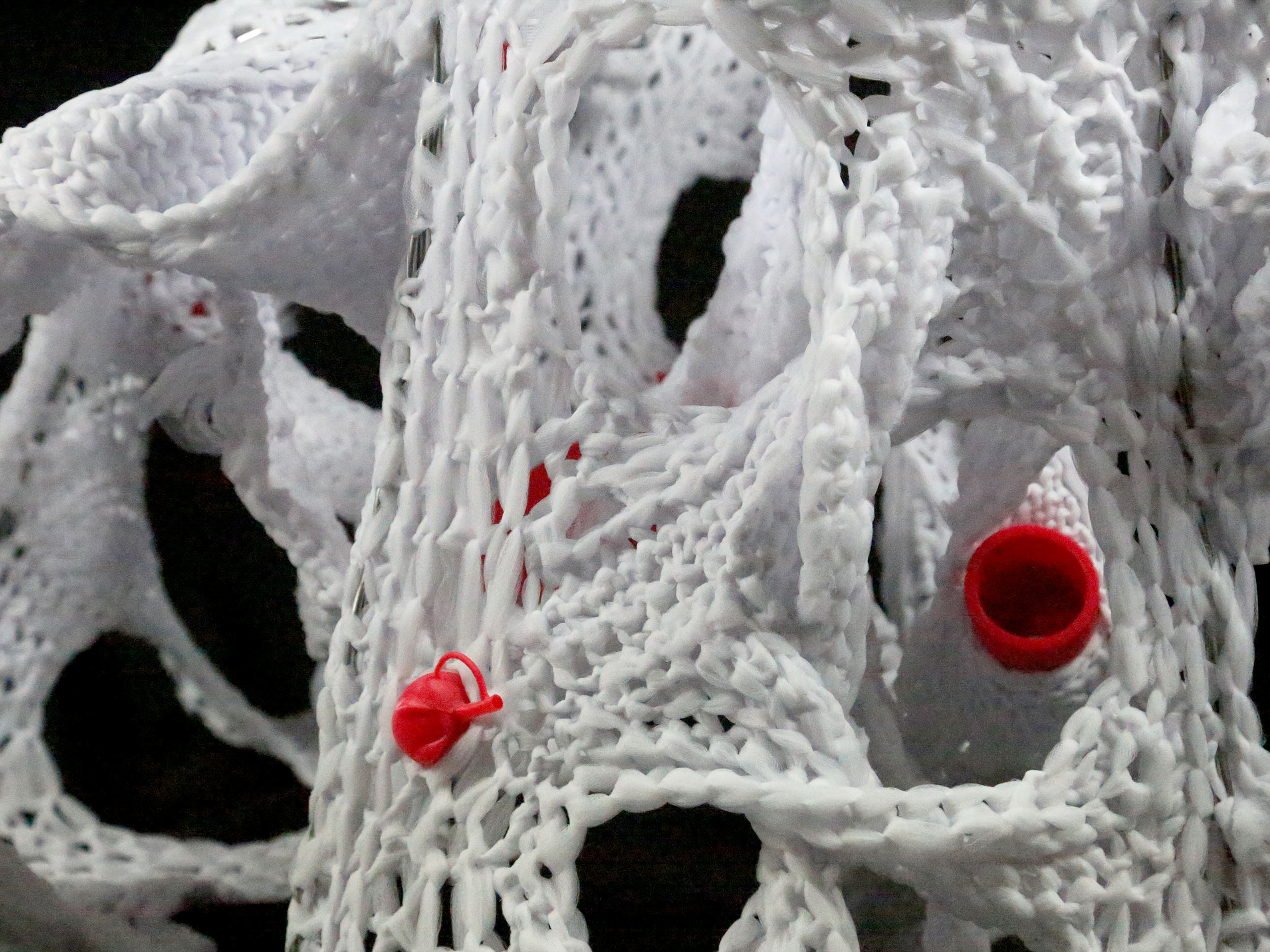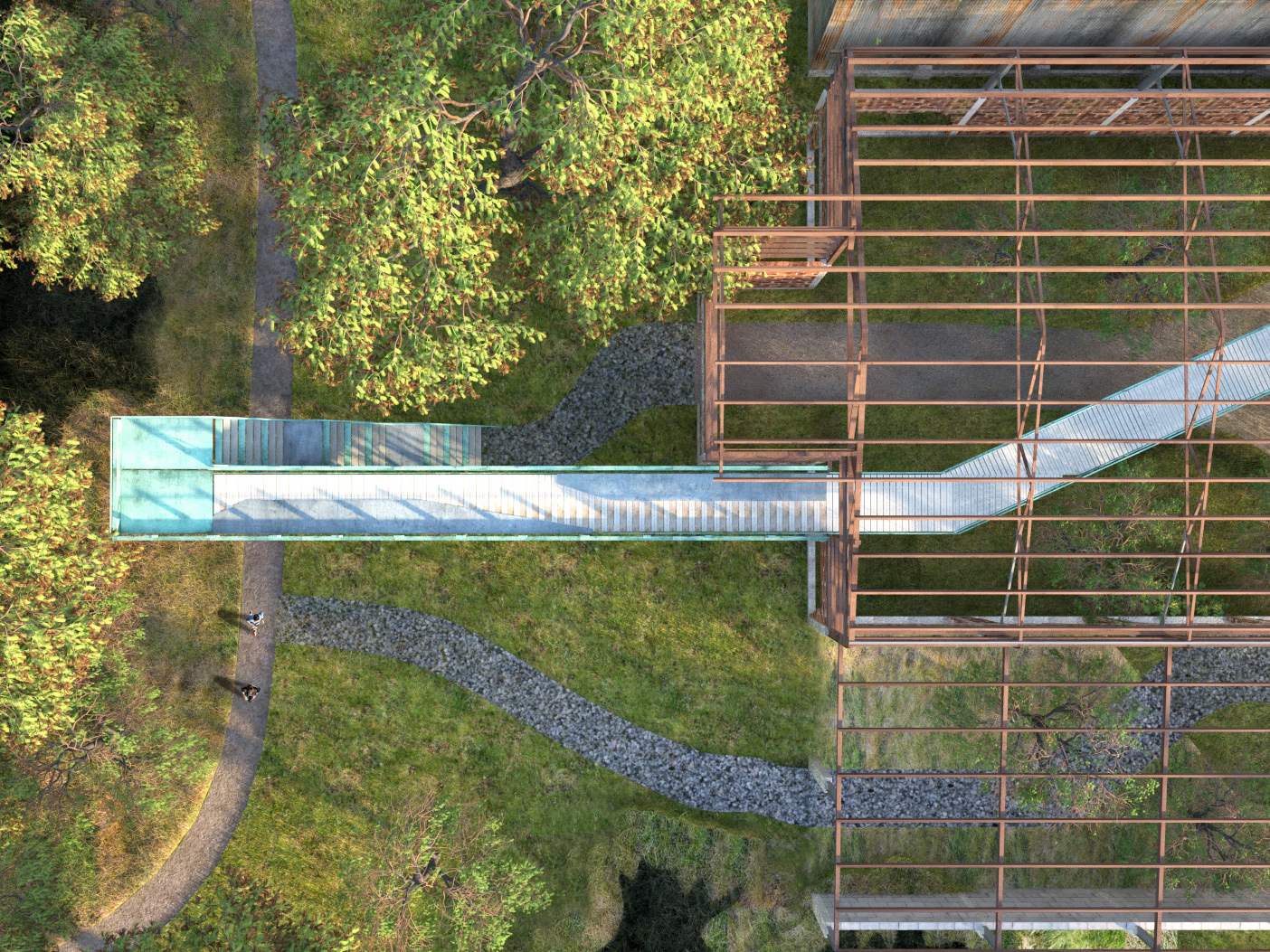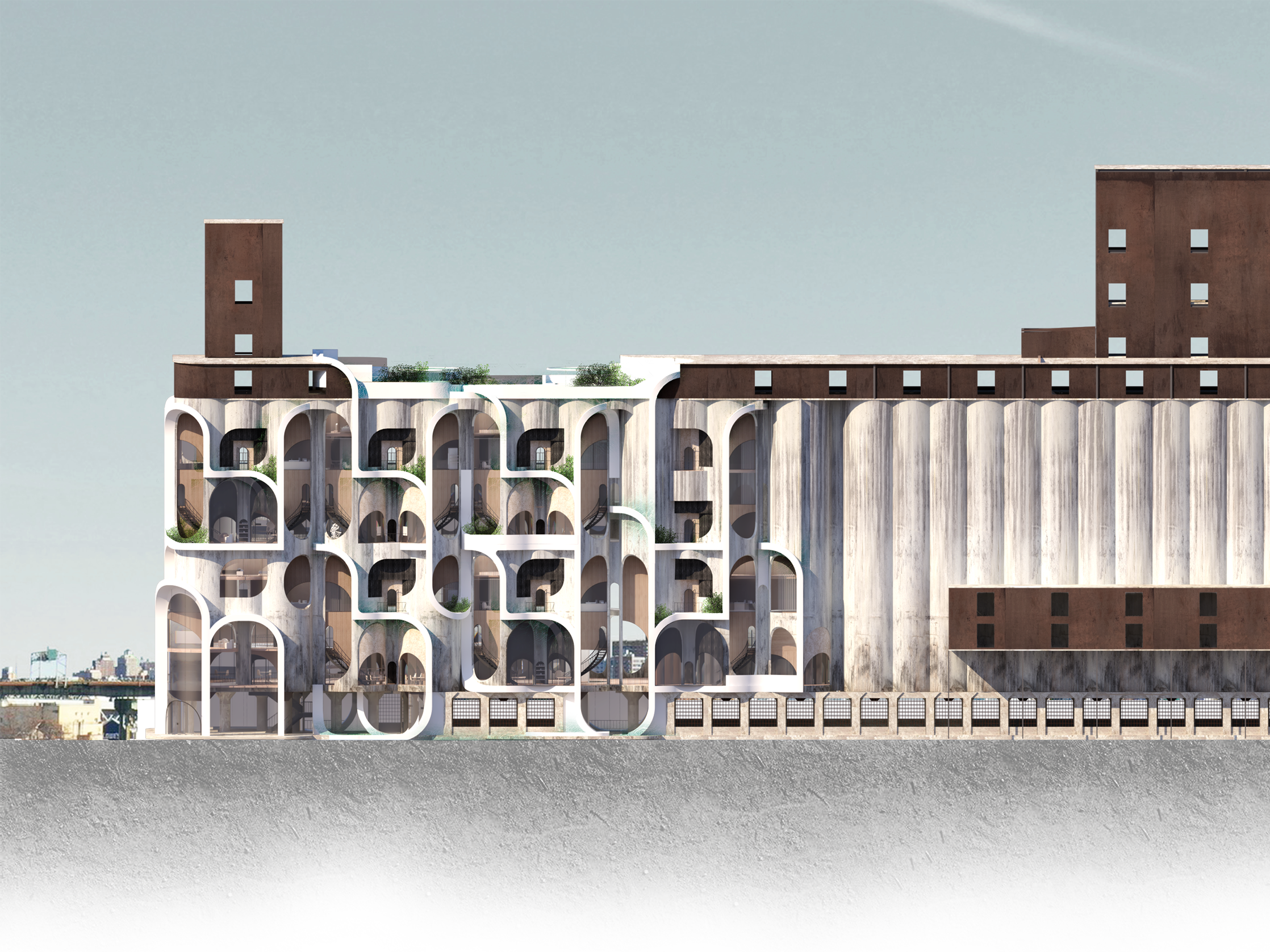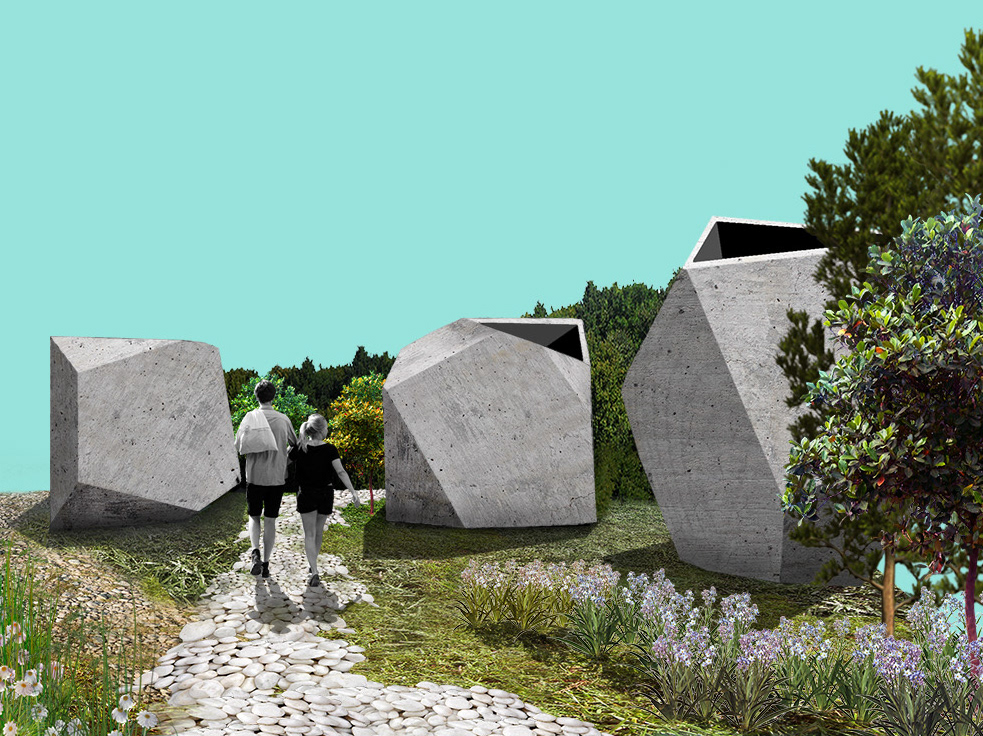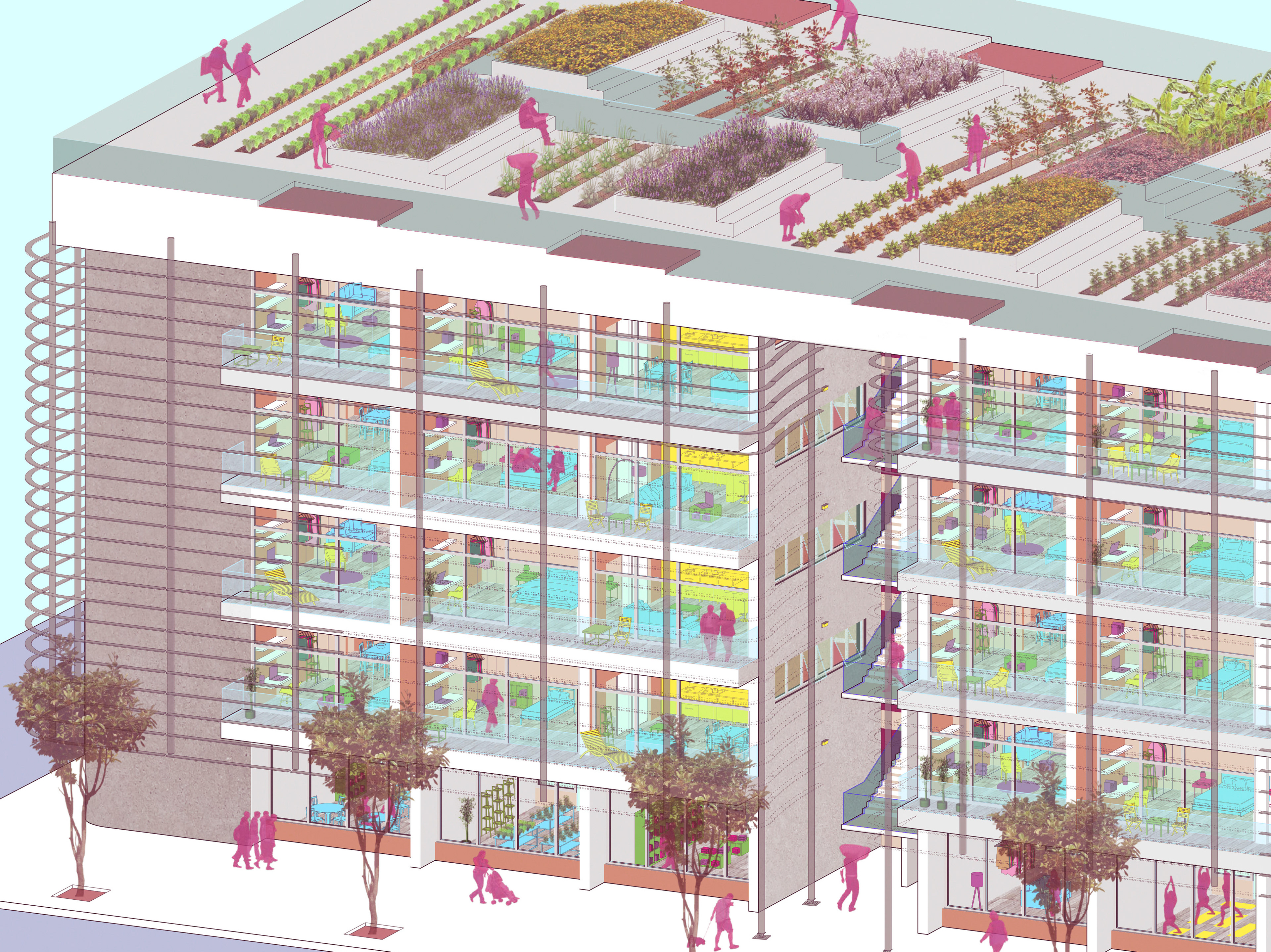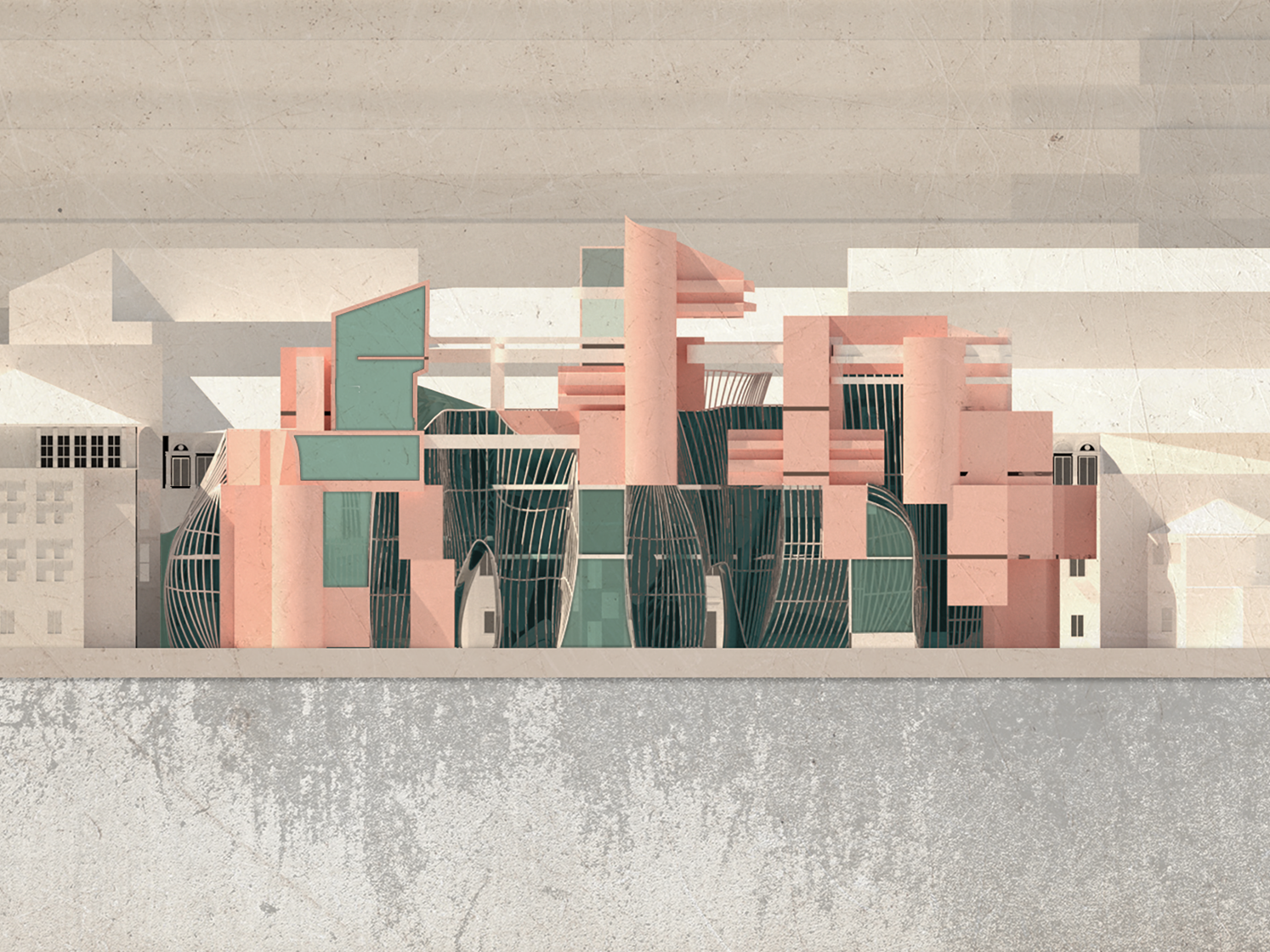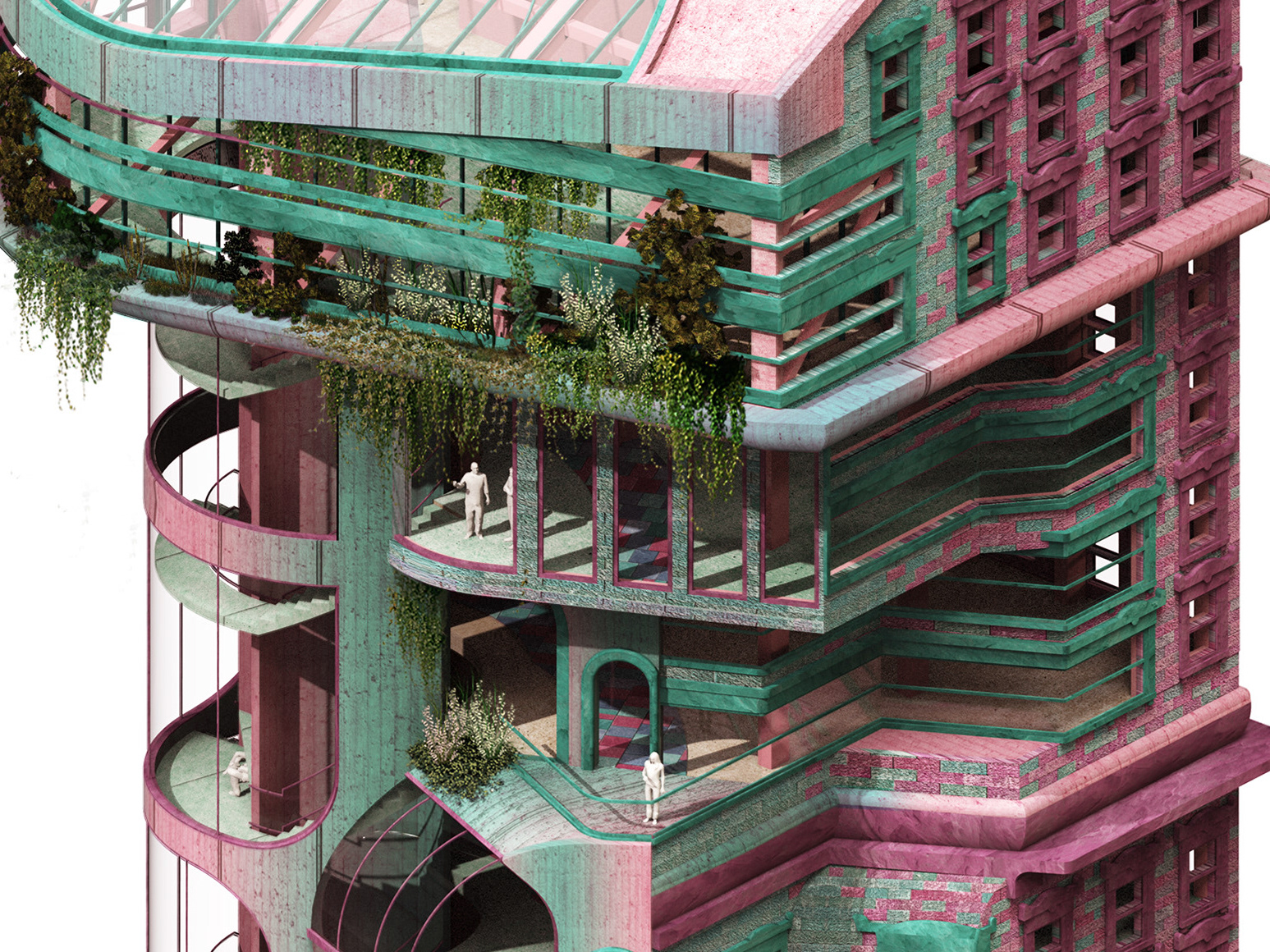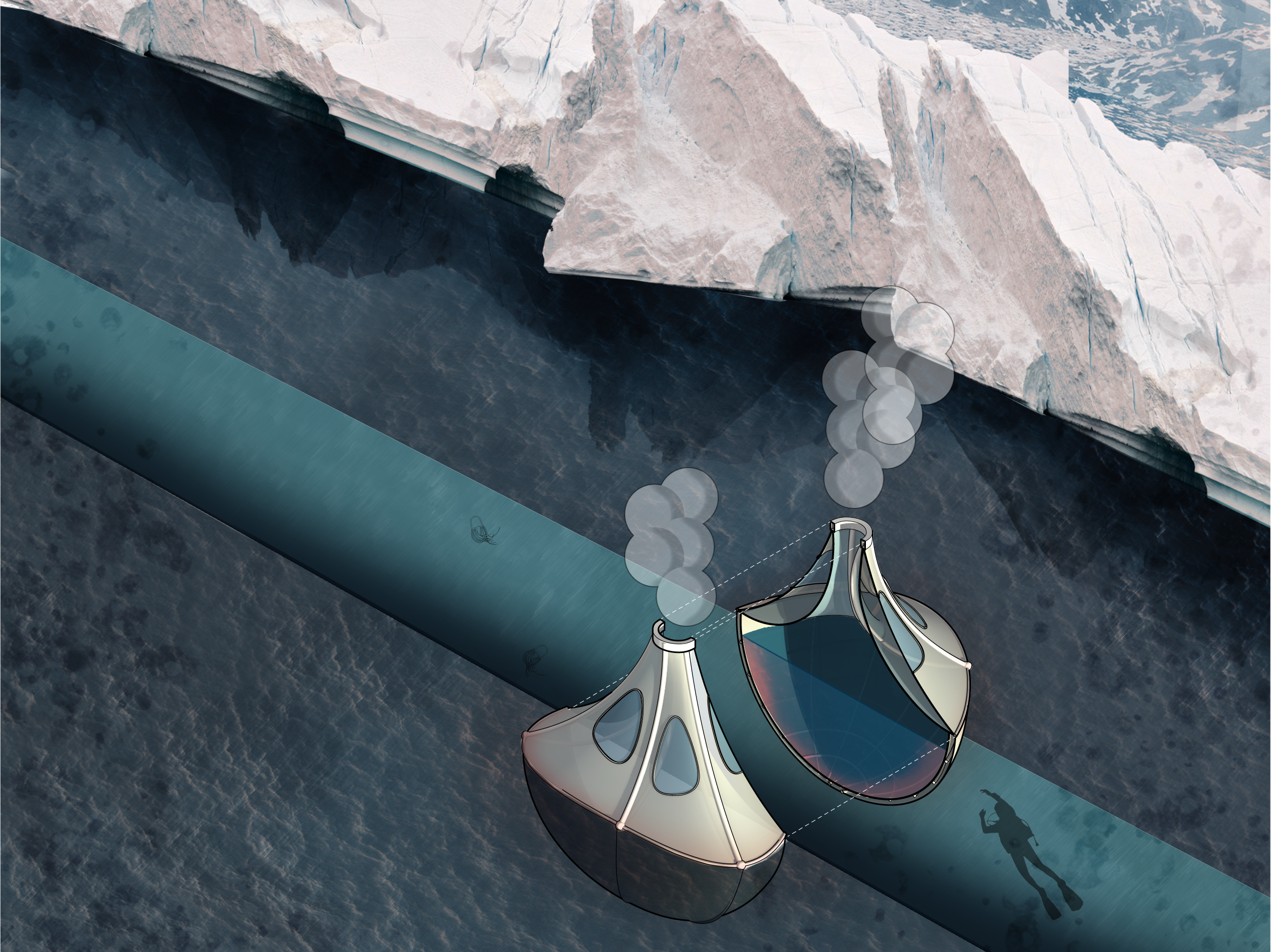700 Research Studio - 3rd year Master of Architecture I
Weitzman School of Design, University of Pennsylvania
Fall 2021
Critic: Jason Payne, TA: Caroline Morgan
Partner: Hayden Wu
Situated at Owens Lake, Biotics of anEfflorescene seeks to explore how the post remediation phase of gravel’s apparent inertness can translate into active elements of mineral flows and ecological revival. Introducing brine as the secondary best available control measure (BACM), the site starts to build off of the underlying effects of efflorescence. This natural effect operationally infiltrates the site at all scales. The flowing brine pools that run through the site serve as vital sources for halobacterium and algae cultivation, which then attracts other organisms like migratory birds to forage and nest in the nearby gravel lands. Dividing the site into smaller polygons is an imposing design disposition that turns the polygon into a post remediation microcosm for research on what engineers and scientists could potentially externalize at Owens Lake at large.
Three main programs are allocated in this microcosm: gravel distribution infrastructure, brine research facility and snowy plover preservation center. Starting from the north side polygons, the unstable nature of the surroundings prompt a rather stable program for gravel infrastructure. Moving down to the south east polygons, the increasing engagement with the east channel areas becomes an ideal location for brine bacterium and efflorescence control exploration.
Aerial drone view of a brine and gravel field | Rendered image montage
Overall Site Map: Minard Plan Drawing showing ecological fields and early spatial dispositions | Drawing representing the aesthetics of soil remediation segmentation techniques used in geo-engineering practices
Overall Satellite Image of Polygon T1A-3 with gravel and brine best available control measures (B.A.C.M’s) | Rendered Montage
The building allocates channels and trays for brine micro testing and distribution from building to fields. Architecture blends with the landscape in a functional and experimental way.
Drone close up view of brine channels and perimeter building
Drone view of brine channels and fields
Isometric Model of the Gravel Efflorescence Geology and Microbiology Research Lab
Drone close up view of snowy plover's nesting zones, brine pools and perimeter building
The active engagement of the brine and gravel fields builds up the desired ecological rejuvenation: the preservation of the native bird species of the snowy plovers.
Isometric of Snowy Plover Preservation and Ecology Center
